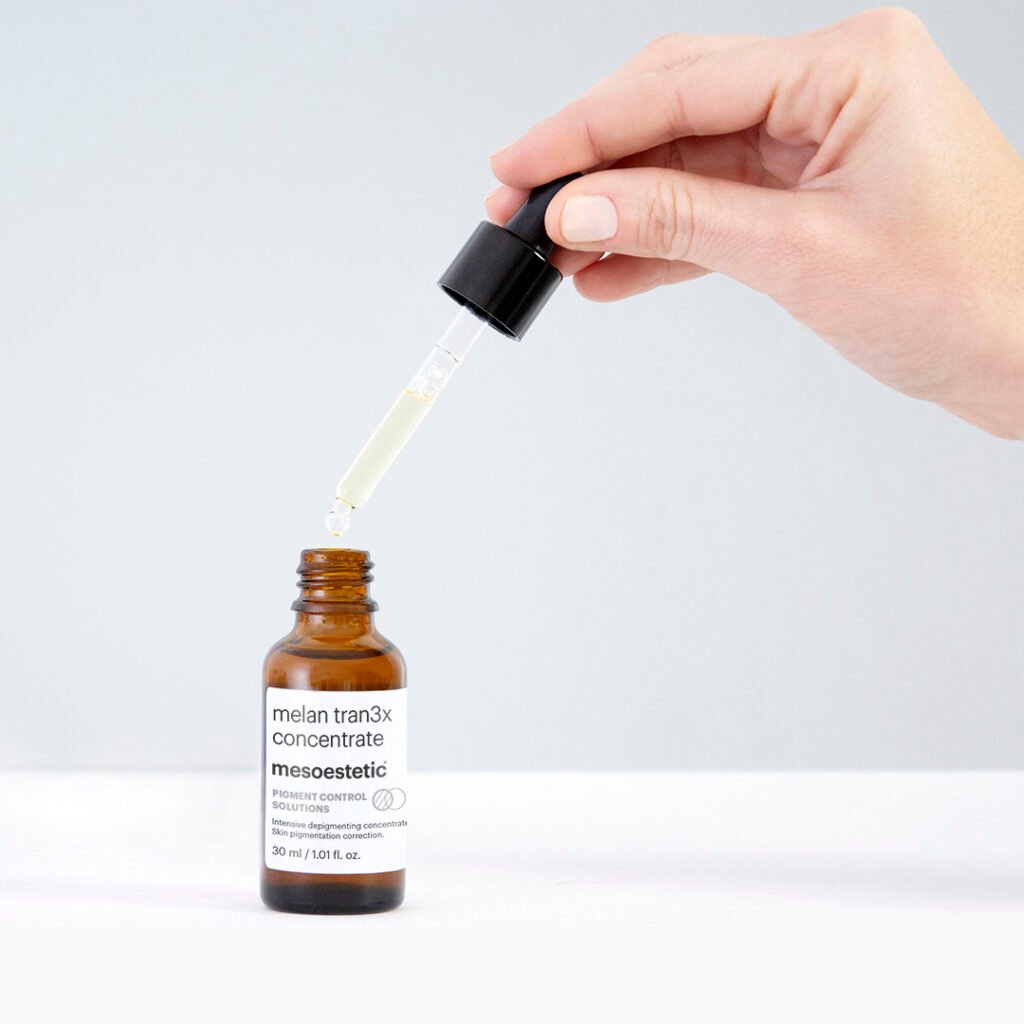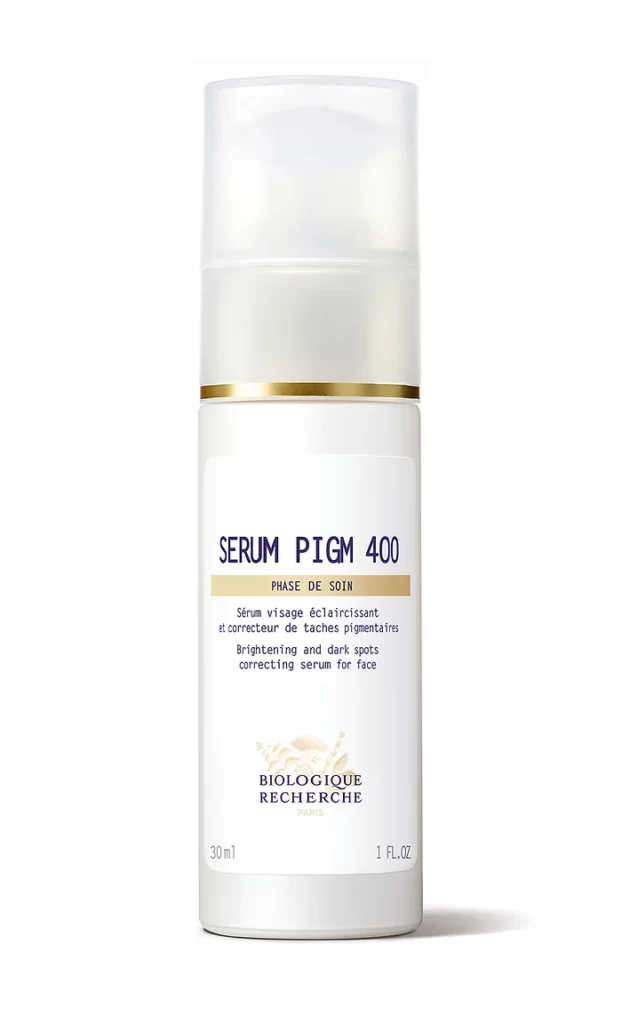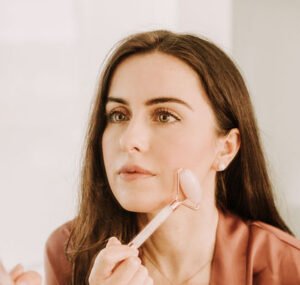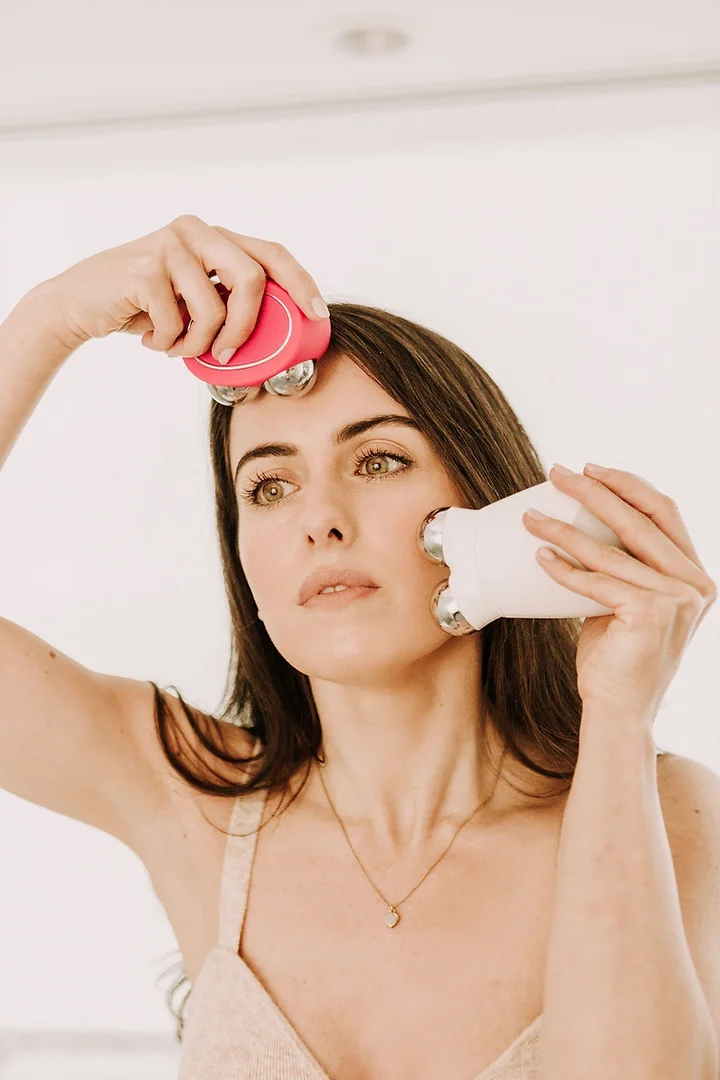What is Melasma?
Melasma is a pigmentation disorder, leading to the appearance of brown and grey patches on the skin. While it is more common on the face, it can also appear on the body. Melasma is more common in females than in males.
Unfortunately, nobody knows the exact cause for Melasma, and it can be different for the individual. Melasma is thought to be a result of internal factors and can be due to hormonal imbalance, a side effect of birth control and can appear during pregnancy known as the pregnancy mask. Other causes can be toxicity in the liver or too much copper in the body. As I said, it can be due to a variety of reasons, and there is no current cure, but I can advise you on how to maintain, improve and prevent the condition worsening.
Melasma can be one of the trickiest skin conditions to treat and is often mismanaged. Melasma treatment is a combination of topical skin treatments, medical-grade products, and changing the lifestyle factors that can be triggering the condition.
Melasma is commonly mistaken for sun damage. Melasma’s appearance is very different and needs a cautious treatment approach that differs from treating hyperpigmentation in the form of sunspots and sun damage.
How to spot to Melasma?!
Melasma commonly appears down the centre of the face, middle of the forehead, bridge of the nose, the upper lip and spreading out across the cheeks. It is very symmetrical, leading to a butterfly effect on the face.
Melasma can be present in the epidermal layer (top layer) of the skin or the dermal layer (second layer), also a combination of both. Using a skin scanner or skin woods lamp can determine this, and it is vital in designing a treatment plan with realistic expectations.
Book a complimentary skin consultation at Kimberly de Matos skin →
Think you have Melasma? Keep reading
Melasma darkens when stimulated by heat, light and UV rays, this is very important to know when dealing with Melasma. The first step in the treatment of Melasma is to invest in a good physical sunscreen, not chemical sunscreen as it generates heat in the skin. Physical sunscreens containing Zinc Oxide or Titanium Dioxide and make sure they are above 16% for adequate protection against UVA and UVB rays. Sunscreen is now a staple in your daily routine.
Sun protection goes beyond protecting your face; it’s essential to protect your body as well, as gaining a tan or not adequately protecting your body will stimulate the Melasma present on the face also.
Skin brighteners
In the treatment for any hyper-pigmentation, tyrosinase inhibitors are key.
Tyrosinase is an enzyme required for the production of melanin (what gives our skin pigment), by using tyrosinase inhibitors they successfully suppress melanocyte hyperactivity (cells that produce melanin) without affecting healthy pigment.
Hydroquinone was the most commonly used skin brighter and tyrosinase inhibitor until realised the long term damage it can cause to the skin.
Therefore many skincare companies formulate with different skin brighteners as a safer alternative to hydroquinone.
Safe and effective Tyrosinase Inhibitors
Arbutin is a naturally occurring derivative of hydroquinone. Arbutin also is known as Alpha Arbutin naturally occurs in plant species and at the highest concentration in bearberry and mulberry. Arbutin is created in synthetic form also. Arbutin is maybe the most effective Tyrosinase inhibitors to use and is very successful in treating hyperpigmentation.
Vitamin C – A powerful antioxidant and tyrosinase inhibitor.
Zinc – Anti-inflammatory and tyrosinase inhibitor works better in conjunction with other skin brighteners.
Resveratrol – Tyrosinase inhibitor, a powerful antioxidant and has calming benefits.
Tyrostatine 11 – Tyrosinase inhibitor, reduces pigment and redness.
ChromaBright – A stable Tyrosinase inhibitor more effective than Kojic acid
Kojic Acid – Effective tyrosinase inhibitor, evens skin tone.
Azelaic Acid – Effective tyrosinase inhibitor, reduces inflammation associated with acne.
Licorice root – Effective tyrosinase inhibitor and anti-inflammatory. Also a powerful antioxidant.
Green Tea – Tyrosinase inhibitor, and powerful antioxidant.
Resorcinol -Tyrosinase inhibitor and in high strengths very exfoliating.
Topical and oral treatment
Tranexamic acid (TXA) is commonly used to reduce melanin synthesis in people with melasma. Tranexamic acid can shrink dermal vascularity. Increased vascularity has been associated with Melasma, this is why you can sometimes notice a red/brown colour with Melasma. Tranexamic acid can be given on prescription orally or topical application.

Recommended Skin Brightening products
Vitamin C
Vitamin C helps to inhibit the enzyme tyrosinase and reduces melanin. Vitamin C successfully suppresses the melanocyte hyperactivity responsible for dark spots and hyperpigmentation without changing healthy pigment. Vitamin C is successful in treating hyper-pigmentation (brown spots) as a result of sun damage, post-inflammatory hyperpigmentation, and Melasma.
Skin brightening Products
Utilizing a combination of tyrosinase inhibitors and skin brighteners to manage and treat hyper-pigmentation. These are essential products for anyone dealing with hyper-pigmentation and in preparation for chemical peeling and skin resurfacing treatments.
Serum Pigm 400
This facial serum is formulated to correct and prevent future damage. A combination of Tyrosinase inhibitors, antioxidants and brightening ingredients leaving the skin illuminated.
This product is a personal favourite to keep my melasma under control. A products I use throughout the summer and on any sun vacations when my Melasma can be more prominent.
Serum Pigm400 also helps to slow down the aging process with its anti-free radical magnets to protect the skin.

Vitamin A
Using a vitamin A serum in the form of Retinaldehyde can help to improve Melasma on the skin. Use Vitamin A as part of your nighttime routine. Vitamin A will help to stimulate cell turn over and lighten and brighten hyper-pigmentation. Vitamin A normalizing the tyrosinase enzyme which will reduce hyper-pigmentation and lead to a more even skin tone. I prefer Retinaldehyde as it causes less inflammation, and less sensitivity to the sun compared to other retinoids.
Treatments
First off avoid any laser treatments like, IPL, BBL, Infrared treatments, Radio Frequency as they generate heat in the skin which may effectively treat Melasma in the short term but it is more than likely to rebound back worse.
Instead, options like chemical peels work well to target hyperpigmentation.
A chemical peel does require some work, and you can expect downtime as the skin sheds, but it’s worth it.
Chemical peels are best performed in the winter months as the skin becomes sensitized to sunlight.
Micro-needling has also shown to significantly improve Melasma.
Micro-needling utilizes tiny needles which gently glide across the skin and are designed to create thousands of micro-channels in the skin, creating a controlled injury and triggering the skin natural wound healing response.
This response results in the release of growth factors, a dramatic increase in production of collagen and elastin, and remodelling of the skin tissue over a period of months following the treatment.
Repairing , healing and slowing down the aging process. Resulting in healthy, smooth, more refined and rejuvenated skin.
Learn more about Micro-needling Treatments
Lifestyle changes
Melasma is common in those taking hormonal birth control and also common in pregnancy, known as Chloasma or the pregnancy mask.
If you are taking hormonal birth control and have Melasma, I strongly recommend switching your method. It can take time to see the improvement in the skin, but it will improve, trust me from my experience.
If you are pregnant and suffering from Chloasma, this generally fades after pregnancy, but still, be vigilant with your SPF.
Avoid heat activities like hot yoga, steam rooms, infrared sauna, these will all stimulate and darken Melasma and can set you back three chemical peels of results.
Final Notes
Melasma is one of the trickiest skin conditions to treat, there is no direct cure to this condition, but you can manage it when you know how. If you suspect you have Melasma, then I would seek a treatment plan from a skin specialist as the treatment differs from your typical hyperpigmentation from sun damage.
With Love
Kimberly




